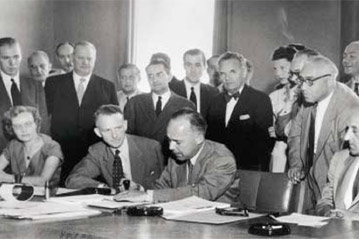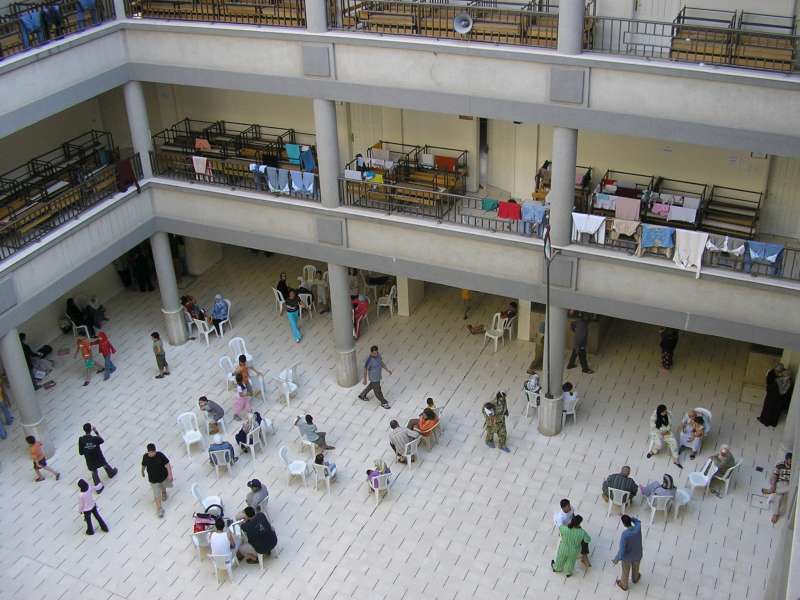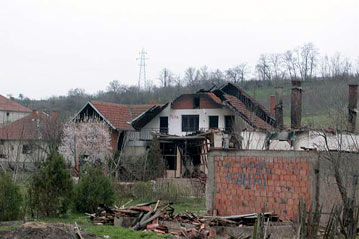Unit plan for ages 9-11 in History: Refugees in History
Teaching Tools, 6 March 2007

© UNHCR/UN Archives/ARNI
The Geneva Refugee Convention was adopted on 28 July 1951 and opened for signature.
UNIT OBJECTIVES
Knowledge
- To understand that the causes of migration are many and varied.
- To understand migrants.
- To understand refugees.
- To understand the concept of asylum.
- To demonstrate to the students that there have been refugees throughout history: where there is persecution, there will be refugees.
- To learn in more detail about a historical group who fled their country for safety; such people were refugees.
- To locate contemporary conflicts and refugees on a world map.
Skills
- To practise sensitive enquiry and reasoning skills.
- To practise research skills:
a) defining a problem
b) seeking appropriate information sources
c) identifying relevant information from the sources
d) organising the information to answer particular questions
e) clear written expression
- To be able to articulate contrasting feelings.
Values
- To encourage empathy by developing a feeling of relationship with a possible refugee in one's family tree.
- To foster a sense of solidarity and responsibility towards refugees.
| CONTENT |
TEACHING METHODS/LEARNING STRATEGIES |
|
This lesson can be linked to lesson 2 of the Geography Unit.
Causes of migration
Simple presentation of pull and push factors – limit this to:
- Search for a better life (migrants)
- Escape from persecution human rights violation and /or war (refugees)
Family trees
- What is a family tree?
- Children's own family trees, including ancestors who came from other countries. Why did they come to this country?
|
Introduction: Teacher questions to the class: What does migration mean? (Expect answers on birds, animals, people). Why do people migrate? What might push people to leave their country? What might pull people to a particular country? Teacher presents definition of refugee.
Development: Children trace their family trees, filling in the Activity Sheet: My family tree. If and when they come to an ancestor who came from another country, they can try to find out why that ancestor left his/her homeland. If they cannot find out the reason, with the help of the teacher or parents, suggest a reason why they ancestor may have left.
Homework: Finish the tree as far back as possible with the aid of parents and older relatives.
|
| RESOURCES |
 © UNHCR/A.Rehrl, August 2, 2006 Five hundred Lebanese refugees and asylum seekers are now sheltering in the Al-Shariya high school in southern Damascus. Suggested reading for the teacher:
Jill Rutter, Refugees: We Left Because We Had To (London, Refugee Council, 1996), p. 9-11
Activity Sheet: My family tree
|
|
| CONTENT |
TEACHING METHODS/LEARNING STRATEGIES |
- Family tree information.
- Revision of definition of refugees.
There have been refugees throughout history: where there is persecution, armed conflict, people flee to save their lives. Causes of flight:
- Prejudice (based on race, religion, nationality, political opinion or membership of a particular social group) -> Discrimination -> Persecution -> Flight
- War -> Flight
A library research assignment on one of the following refugee groups:
- the Huguenots (16th c.)
- the Pilgrim Fathers (17th c.)
- Eastern European Jews (19th c.)
- World War II refugees in Europe or Asia
- Palestinians (since 1948)
- Indochinese (since 1975)
|
Link to previous lesson: Teacher questions to the class: Who among the students has an ancestor who came from another country? Did the ancestor leave his/her homeland in search of a more prosperous life, or because there was danger in the homeland?
Introduction: Discussion questions about the causes of flight. Both teacher and students should cite examples from history.
Development: Time spent in library on guided research on the selected topic (see accompanying Assignment Sheet).
|
| RESOURCES |
 © UNHCR/IRO Early refugees: Some of the first people helped by UNHCR being processed by Germany in 1953 for resettlement in other countries. School library resources such as encyclopaedias and history reference books.
Activity Sheet: Refugees in History
|
|
| CONTENT |
TEACHING METHODS/LEARNING STRATEGIES |
|
As for previous lesson
|
Verbal review of results of library research.
Questioning individuals, the teacher should build up a blackboard summary of reasons for flight in history.
|
| RESOURCES |
 © UNHCR/T.Buckenmeyer A destroyed house in Svinjare/Frasier, a mixed village in Kosovo. The March 2004 riots underline the fragile nature of inter-ethnic relations in the restive region. Pupils' completed assignment sheets.
|
|
| CONTENT |
TEACHING METHODS/LEARNING STRATEGIES |
|
This lesson can be linked to lesson 1 of the Geography Unit.
The present day: Where do refugees come from? Where do they flee to?
Countries of asylum:
- Definition
- Is our country a country of asylum?
- What asylum can mean to a refugee (safety, security, basic needs met)
|
Introduction: Using a world map and through questions about current world events, children are shown the locations of some armed conflict, refugee flows and refugee populations.
Development: Questions designed to encourage empathy, e.g. How would you feel if...? What would you do if...?
|
| RESOURCES |
 © UNHCR/A.Hollman The search for asylum is often complicated by the movement of millions of economic migrants. A Nigerian awaits his fate at Zurich airport. UNHCR, The State of the World's Refugees 1995:
In Search of Solutions, (Oxford, OUP, 1995), p. 12-13.
|
|








